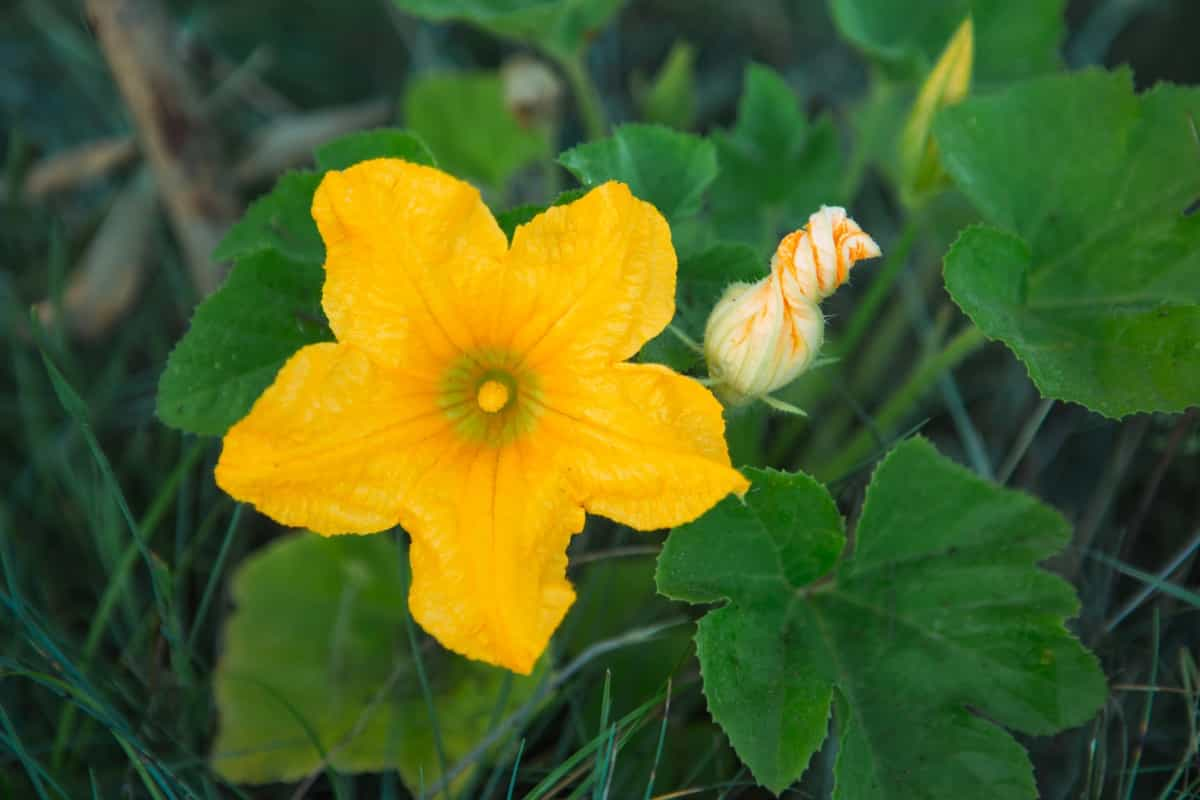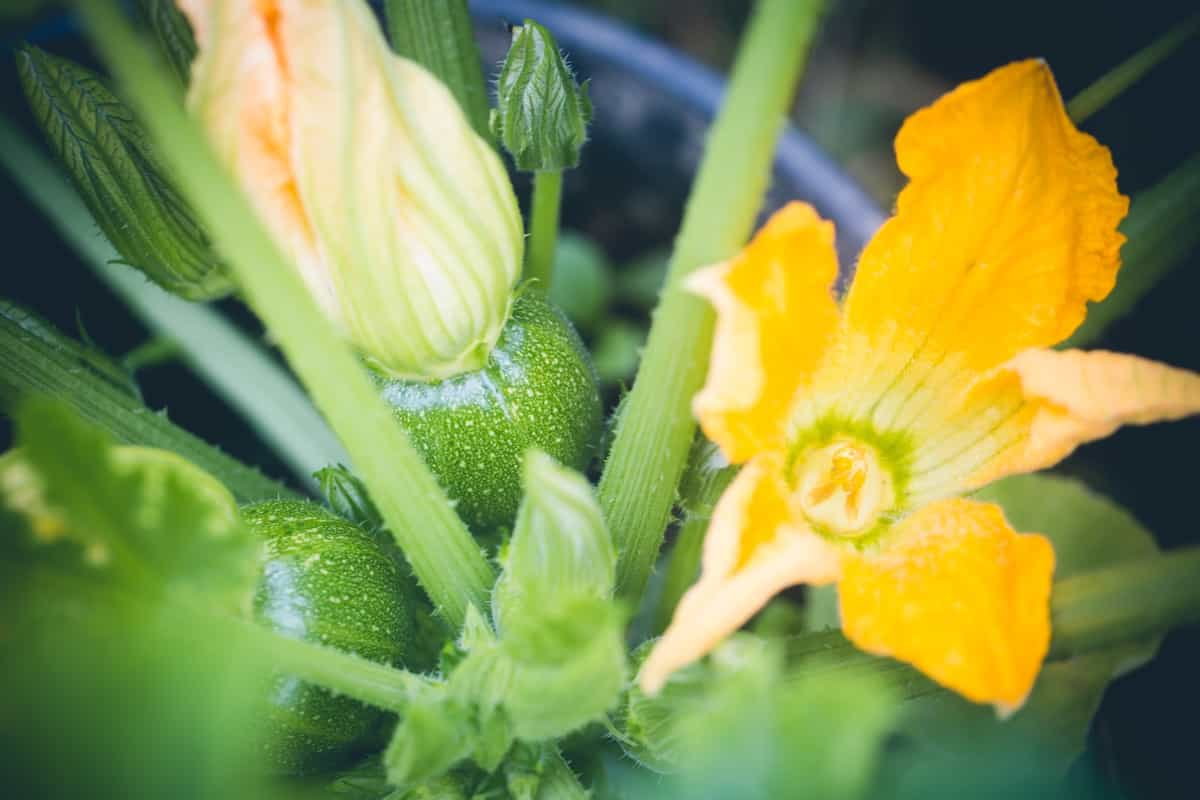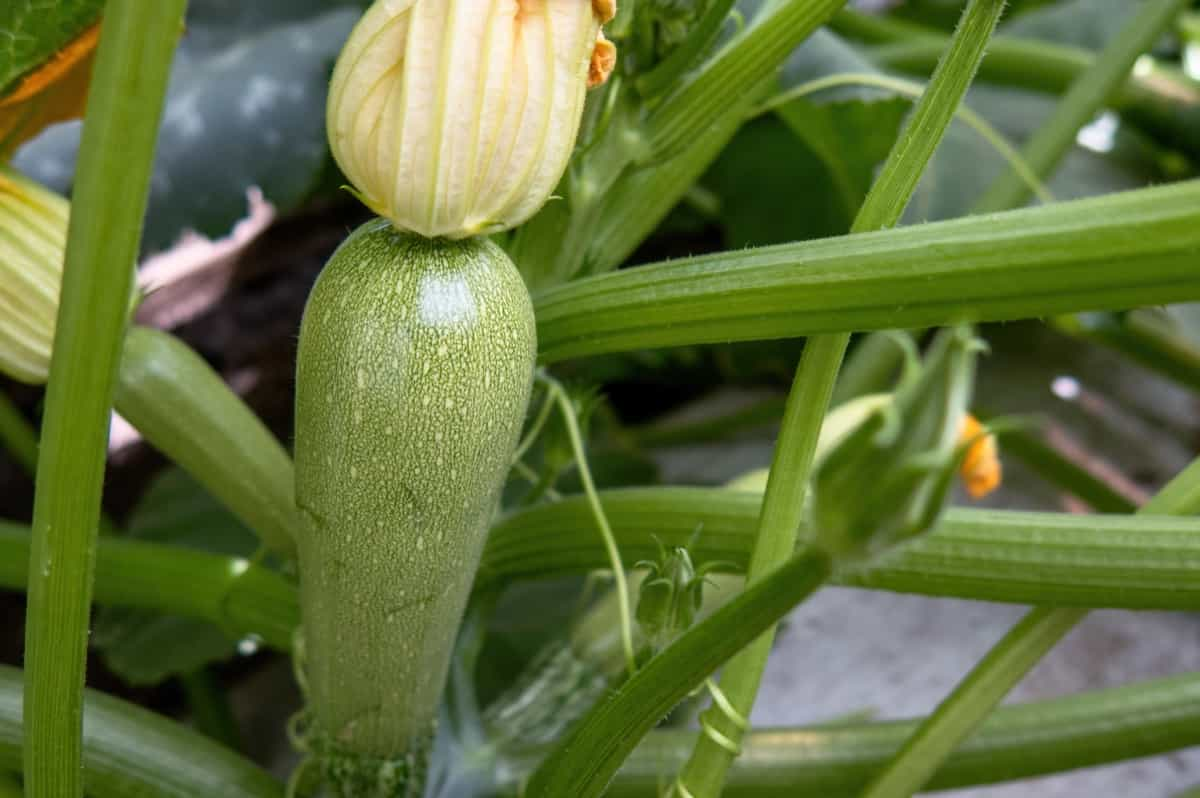Zucchini is a beloved summer vegetable known for its hearty growth and generous yields. But, achieving a healthy crop hinges on one critical process: pollination. Understanding how to pollinate zucchini by hand, tell if zucchini is pollinated, and what to do when faced with zucchini pollination problems are essential aspects of successful zucchini cultivation.

The process can be complex as it involves several components, including knowing when to pollinate, using both hand and natural methods, and attracting pollinators. It also calls for familiarization with self-pollinating zucchini varieties and techniques to avoid cross-pollination. This comprehensive guide will help demystify these essential aspects of zucchini pollination.
How to Pollinate Zucchini Flowers
Best Time to Pollinate Zucchini
Pollination timing significantly influences the success rate of your zucchini harvest. The best time to pollinate zucchini is in the early morning hours. This is when the flowers are freshly opened, and their pollen is most viable. Pollen grains are moist and sticky during these hours, making it easier for them to adhere to pollinators or the tools used for hand pollination.
Flowers usually close by noon; hence early morning is the ideal window for effective pollination. Furthermore, pollinating in the morning reduces the chances of the pollen drying out and increases the likelihood of a successful pollination process.
Hand Pollination Techniques for Zucchini
Even though zucchinis can be pollinated naturally, hand pollination can be reliable when natural pollinators are scarce or absent. It’s a simple process involving transferring pollen from male to female flowers. If you’re wondering how to pollinate zucchini without male flowers, it is possible, albeit a bit tricky.
Male flowers typically open a few days before the females, so if you have some early male flowers, you can store their pollen in a cool, dry place and use it when the female flowers open. This pollen can be applied to the female flowers using a small brush or cotton swab. You should ensure the pollen-coated tool gently touches the female flower’s stigma for successful pollination.
Natural Methods for Pollinating Zucchini
Nature is equipped with an array of pollinators that facilitate the pollination process. Bees are the most common and effective natural pollinators for zucchinis. They transfer pollen as they move from male to female flowers, feeding on nectar. Other insects and the wind can also contribute to natural pollination. However, suppose you are facing zucchini pollination problems, such as a lack of natural pollinators. In that case, you might need to rely on hand pollination or work towards attracting more pollinators to your garden.
In case you missed it: 10 Common Problems With Zucchini Plants: How to Fix, Treatment, and Solutions

How to Attract Pollinators to Zucchini Plants
Attracting natural pollinators is a fantastic way to increase pollination rates. Planting flowers with high nectar content around your zucchini plants will attract bees, butterflies, and other pollinating insects. Flowers with bright colors, especially yellow and blue, are particularly attractive to these pollinators. You can also create an inviting habitat for them by providing water sources and avoiding pesticides, which can harm these beneficial insects. Another way to attract pollinators is by installing bee houses, which provide nesting places for solitary bees.
Signs of Successful Zucchini Pollination
Post-pollination, it’s important to discern whether the process has been successful. How can you tell if zucchini is pollinated? A clear indication of successful zucchini pollination is the growth of the fruit. Once pollinated, the female flower closes, and the small fruit at its base begins to grow. On the other hand, if the flower withers and the small fruit turns yellow and falls off, it indicates that the flower was not pollinated successfully. A properly pollinated zucchini will grow rapidly, so keep a keen eye on your plants post-pollination.
Common Problems With Zucchini Pollination
Several challenges can affect Zucchini pollination, mainly a lack of pollinators. Zucchini pollination issues can arise from imbalanced male and female flowers, unfavorable weather (such as heavy rain or high temperatures impacting pollen quality), and flower damage caused by diseases or pests. Blossom end rot is a common issue seen when flowers are not pollinated properly. All these issues can lead to a decreased yield of zucchinis. Therefore, understanding these problems and how to mitigate them is vital for a successful zucchini harvest.
Tips for Increasing Zucchini Pollination Rates
There are various strategies to enhance zucchini pollination rates. Implementing hand pollination techniques, attracting more natural pollinators, and ensuring healthy plant growth are all crucial steps. Regularly monitoring your plants for pests and diseases also contributes to successful pollination.
In case you missed it: How to Identify and Treat Zucchini Diseases: Control and Prevention

Choosing self-pollinating zucchini varieties is another effective way to increase pollination rates. These varieties produce flowers that contain both male and female reproductive parts, making pollination more likely even without the presence of a large number of natural pollinators.
Importance of Proper Zucchini Pollination
Proper pollination is crucial for zucchini plants because it directly affects their productivity. Without effective pollination, zucchini plants cannot produce fruit. Pollination enables the transfer of pollen from male to female flowers, which triggers the development of zucchini fruit. Moreover, well-pollinated zucchini fruits are usually larger and have a better shape and taste. This is why understanding how to pollinate zucchini effectively is critical for every gardener who wants a plentiful and high-quality harvest.
Pollination Requirements for Zucchini Plants
Zucchini plants require specific conditions for effective pollination. The plants need a balanced number of male and female flowers. Pollinators are crucial, and suitable weather conditions, specifically warm temperatures and low humidity, are preferred. The plant’s overall health also affects the pollination process. Nutrient-rich soil, ample sunlight, and adequate water are required for the zucchini plants to bloom healthily and attract pollinators. These conditions all contribute to successful pollination and a bountiful zucchini harvest.
How to Prevent Cross-pollination in Zucchini
Zucchini plants are susceptible to cross-pollination, especially when planted near other squash varieties. Cross-pollination can result in hybrid fruits with less desirable characteristics. Cross-pollination can be prevented by planting different squash varieties at least 50 feet apart, though further is better.
Another method is to use row covers, which prevent pollinating insects from accessing the flowers. Hand pollination can also help prevent cross-pollination, as you can control where the pollen is transferred. This is particularly helpful when growing zucchinis for seed-saving purposes.
In case you missed it: Frequently Asked Questions About Growing Zucchini from Seed to Harvest

Conclusion
Zucchini pollination involves several factors and techniques, from understanding the best time to pollinate to employing hand and natural pollination methods, attracting pollinators, recognizing signs of successful pollination, dealing with common pollination problems, and preventing cross-pollination. Implementing these strategies and knowledge can significantly improve your zucchini yield and ensure you enjoy a fruitful gardening season.
- Feed Your Flock for Less: Top 10 Tips to Save on Chicken Feed
- Ultimate Guide to Ossabaw Island Hog: Breeding, Raising, Diet, and Care
- Hatching Answers: The Top 10 Reasons Your Chickens Aren’t Laying Eggs
- Eggs and Economics: Breaking Down the Cost of Raising Backyard Chickens
- Defend Your Greens: Proven Methods to Keep Iguanas Out of Your Garden
- Ultimate Guide to Cinnamon Queen Chicken: A Comprehensive Guide for Beginners
- Ultimate Guide to California Tan Chicken: Breeding, Raising, Diet, Egg-Production and Care
- Ultimate Guide to Marsh Daisy Chicken: Breeding, Raising, Diet, and Care
- 10 Types of Chicken Farming Businesses You Can Start for Profits